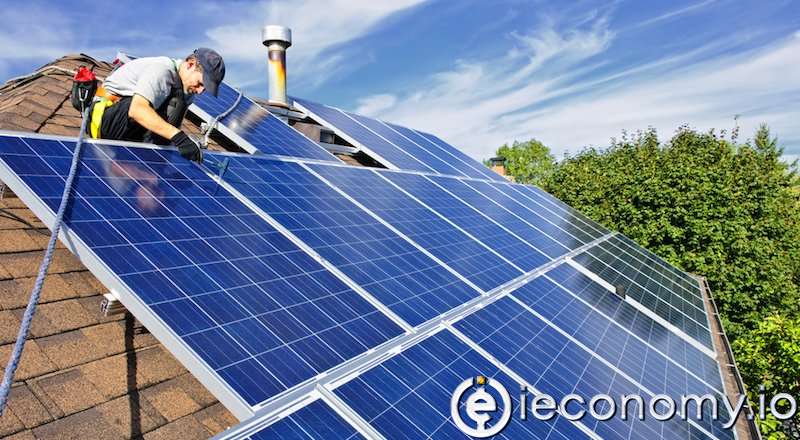The solar energy capacity limit in the apartment has been increased
With the EMRA decision, the capacity limit of solar energy generation was increased from 10 kW to 25 kW in areas such...

Yayınlanma: 15 Mart 2022 02:47
Güncellenme: 14 Aralık 2025 10:00
The decision taken at the meeting held by the Energy Market Regulatory Authority on March 10 was published in the Official Gazette and revised as 25 kW by changing the procedures and principles for Solar Energy Based Electricity Production Facilities up to 10 kilowatts in non-commercial areas such as apartments, estates, mosques, farms, and villas.
In other words, the upper limit of capacity, which was 10 kW connected to a meter, was increased to 25 kW for unlicensed solar energy investment in these areas. If the area is available, it will be possible to invest in more than one meter.
While commercial solar energy investments have been encouraged for a long time, the decision in question aims to increase the capacity of individual electricity generation capacity and the capacity to be integrated into the electricity grid after power cuts.
In February, the scope of existing supports, such as VAT exemption and customs duty exemption for wind and solar energy investments, was expanded, paving the way for investments within the scope of unlicensed activities that generate electricity from solar and wind energy to benefit from the fourth region's supports. Thus, an 18 percent VAT exemption and a 30 percent tax reduction in the fourth region will be applied to solar and wind energy investors in addition to customs duty.
How much does a 25 KW investment cost?
Industry officials state that while an investment of 10 thousand dollars (approximately 150 thousand TL) is required for a 10 kW capacity, an investment of approximately 20 thousand dollars (nearly 300 thousand TL) is required for a 25 kW capacity, although there is not exactly the same increase when the cost of scale is taken into account.
Officials of the Solar Energy Industrialists and Industry Association state that the existing consumer loan terms will not be sufficient for the said investment to be implemented more widely, and that long-term mortgage-like loans should be introduced.
The maximum maturity for loans over TL 50 thousand was reduced from 36 months to 24 months in September last year. Industry officials are of the opinion that individual solar energy investments can increase if loans are offered with an average maturity of 10 years at 1-2% interest.
With the 10 kW solar energy electricity generation system, electrical appliances such as air conditioning, washing machines, dishwashers, lighting lamps, televisions, refrigerators, and computers can be operated at home for the electricity needs of a house. It is considered suitable for places with an average monthly electricity consumption of up to 1400 kwh.
An area of 100-120 square meters is required
By increasing the capacity of the Roof GES power plant to 25 kW, it will be possible to meet the needs of areas such as multi-apartment sites within an average of 5 years, on the condition that the investment is returned, and to sell the surplus to the network in varying amounts depending on the period and season.
In order to install a roof solar energy system, first of all, it is necessary to apply to the electricity distribution company in the province and get permission. In addition, the project design procedure is carried out by the company that established the system.
While an average of 60 square meters is required to install a 10 kW roof system, it is stated that 120-150 square meters will be required when new technology panels are taken into account at 25 kW capacity.
Cem Özkök, President of the Energy Investors Association, said: "The production and use of electricity from the sun will accelerate"
For electricity generation facilities based on solar energy up to 10 kW, it was revised to 25 kW by making changes in the relevant procedures and principles upon the decision taken by EMRA. We consider this a positive decision in terms of spreading solar energy production and use across the base more. Because single residences, such as villas, which want to generate electricity from solar energy and have a larger roof area, will be able to generate more electricity by taking advantage of this arrangement. This will be an application that will increase electricity production from solar energy in our country.




